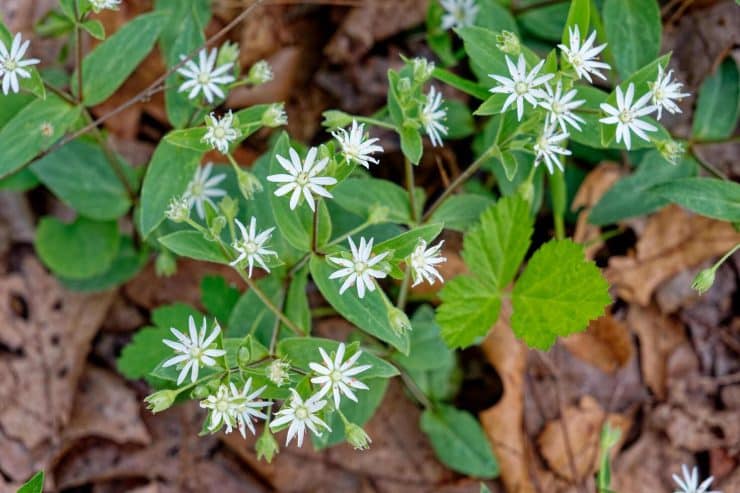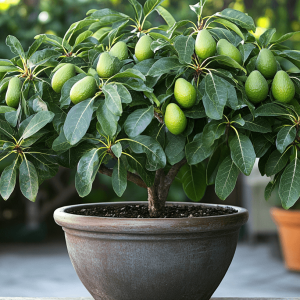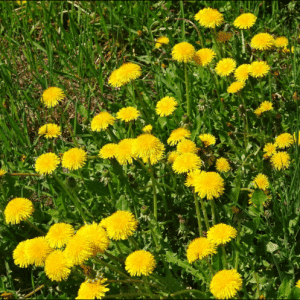
Chickweed (Stellaria media), often considered a common garden weed, is a remarkable plant with a rich history of medicinal and culinary use. Its delicate white flowers and sprawling green leaves thrive in various climates, making it accessible and easy to cultivate. This humble plant offers a wealth of benefits that range from improving skin health to aiding digestion. Let’s explore the wonders of chickweed and how it can enhance your well-being.
Nutritional Profile of Chickweed
Chickweed is a powerhouse of nutrients, providing an excellent source of vitamins and minerals. It is rich in:
- Vitamins: A, C, and E
- Minerals: Calcium, magnesium, potassium, and zinc
- Antioxidants: Flavonoids and saponins
These nutrients make chickweed an excellent addition to a healthy diet and a valuable herb for medicinal purposes.
Traditional and Modern Uses
1. Skin Health
Chickweed is renowned for its soothing properties, making it a staple in skincare remedies. It can be used to:
- Relieve itching and inflammation caused by eczema, psoriasis, and rashes.
- Soothe minor burns and sunburns.
- Accelerate healing of wounds and cuts.
How to Use:
Chickweed can be applied topically as a poultice or infused into oils and salves for direct application to the skin.
2. Digestive Aid
Chickweed has been used traditionally to support digestion. It helps:
- Soothe gastric ulcers and inflammation in the digestive tract.
- Act as a mild laxative, promoting regular bowel movements.
- Detoxify the body by promoting healthy liver function.
How to Use:
Chickweed tea is a popular method for consuming the herb to aid digestion.
3. Respiratory Support
Chickweed is often used to alleviate respiratory issues, such as:
- Coughs and sore throats.
- Congestion associated with colds or allergies.
Its soothing effect on mucous membranes makes it beneficial for the respiratory system.
How to Use:
Chickweed can be prepared as a tea or tincture for respiratory relief.
Culinary Uses
Chickweed’s mild, slightly sweet flavor makes it a delightful addition to various dishes. It can be used in:
- Salads: Fresh chickweed leaves add a crisp texture and a hint of sweetness.
- Smoothies: Blending chickweed with fruits enhances the nutritional value.
- Soups and stews: It can be added as a garnish or cooked in for added nutrients.
Scientific Evidence Supporting Chickweed’s Benefits
Recent studies have begun to validate the traditional uses of chickweed. Research has shown that its anti-inflammatory and antioxidant properties can help reduce oxidative stress, a key factor in chronic diseases. Additionally, the plant’s saponins have demonstrated potential in improving skin health and supporting the immune system.
Precautions and Considerations
While chickweed is generally safe for most people, there are a few considerations:
- Allergic Reactions: Some individuals may experience mild allergic reactions when using chickweed.
- Pregnancy and Breastfeeding: Consult a healthcare provider before use during these periods.
- Moderation: Like any herb, chickweed should be consumed in moderation to avoid potential side effects.
Chickweed is a versatile plant that offers a wealth of benefits for both health and cuisine. Whether used as a skin salve, digestive aid, or nutritious salad ingredient, this wonderful herb deserves a spot in your natural remedy toolkit. By embracing chickweed’s many uses, you can tap into its healing potential and enhance your overall well-being.
Chanca Piedra (Phyllanthus niruri), also known as “stone breaker” or “seed-under-leaf,” is a powerful herb native to tropical regions, including the Amazon rainforest, India, and Southeast Asia…
Honey and turmeric are two powerful natural ingredients, each celebrated for their numerous health benefits. When combined, they create a potent mix often referred to as “golden honey” due to its bright hue…
Taro, scientifically known as Colocasia esculenta, is a tropical plant widely cultivated for its edible corms (root-like structures) and leaves. Native to Southeast Asia and the Pacific Islands, taro has become a staple…







маркетплейс аккаунтов соцсетей продажа аккаунтов соцсетей
заработок на аккаунтах https://marketplace-akkauntov-top.ru
купить аккаунт услуги по продаже аккаунтов
магазин аккаунтов социальных сетей магазин аккаунтов
маркетплейс аккаунтов аккаунты с балансом
перепродажа аккаунтов биржа аккаунтов
маркетплейс аккаунтов продажа аккаунтов соцсетей
Account Sale Sell Account
Account Selling Platform accountsmarketplacepro.com
Accounts market Account Buying Platform
Guaranteed Accounts Account Buying Service
Account Exchange Service https://accountsmarketplacehub.com
Ready-Made Accounts for Sale Ready-Made Accounts for Sale
Sell Pre-made Account Sell accounts
Website for Buying Accounts Social media account marketplace
Buy Account Account Trading
Buy Pre-made Account Account trading platform
account selling platform secure account purchasing platform
buy accounts database of accounts for sale
account marketplace buy accounts
buy account secure account sales
account market account selling platform
account exchange service account selling platform
accounts for sale account buying service
account market accountsmarketdiscount.com
database of accounts for sale https://discountaccountsmarket.com
account trading service accounts-marketplace.org
guaranteed accounts ready-made accounts for sale
website for buying accounts website for buying accounts
gaming account marketplace account exchange service
account trading gaming account marketplace
secure account sales sell account
sell pre-made account buy-social-accounts.org
account marketplace profitable account sales
account selling platform account acquisition
account market sell pre-made account
accounts for sale account market
account trading platform account trading platform
marketplace for ready-made accounts website for selling accounts
account exchange service buy accounts
account exchange service profitable account sales
purchase ready-made accounts account trading platform
social media account marketplace account store
account selling service social media account marketplace
buy pre-made account top-social-accounts.org
online account store https://accounts-offer.org
account marketplace accounts market
secure account sales accounts marketplace
ready-made accounts for sale https://social-accounts-marketplaces.live/
buy pre-made account https://accounts-marketplace.live
accounts market accounts market
account trading platform https://buy-accounts.space/
account buying platform https://buy-accounts-shop.pro
account store https://buy-accounts.live/
sell pre-made account accounts marketplace
account catalog buy accounts
account trading platform https://accounts-marketplace-best.pro
биржа аккаунтов https://akkaunty-na-prodazhu.pro/
покупка аккаунтов https://rynok-akkauntov.top
магазин аккаунтов kupit-akkaunt.xyz
продать аккаунт https://akkaunt-magazin.online
площадка для продажи аккаунтов akkaunty-market.live
биржа аккаунтов https://kupit-akkaunty-market.xyz
купить аккаунт akkaunty-optom.live
площадка для продажи аккаунтов https://online-akkaunty-magazin.xyz/
покупка аккаунтов akkaunty-dlya-prodazhi.pro
биржа аккаунтов https://kupit-akkaunt.online
buy facebook account https://buy-adsaccounts.work
buy facebook ads manager https://buy-ad-accounts.click
buy facebook accounts cheap facebook account buy
facebook ad account for sale https://buy-ads-account.click
cheap facebook accounts https://ad-account-buy.top
facebook ad account buy https://buy-ads-account.work/
buy facebook advertising buy aged facebook ads account
buy ad account facebook https://buy-ad-account.click
Эта статья полна интересного контента, который побудит вас исследовать новые горизонты. Мы собрали полезные факты и удивительные истории, которые обогащают ваше понимание темы. Читайте, погружайтесь в детали и наслаждайтесь процессом изучения!
Углубиться в тему – https://medalkoblog.ru/
buy accounts facebook buying fb accounts
google ads account seller https://buy-ads-account.top
buy google ads https://buy-ads-accounts.click
buy facebook profiles fb accounts for sale
buy google ads invoice account https://ads-account-for-sale.top
buy google adwords account buy account google ads
buy account google ads buy-ads-invoice-account.top
buy google ads threshold account https://buy-account-ads.work/
buy google adwords account https://buy-ads-agency-account.top
google ads account seller https://sell-ads-account.click
adwords account for sale google ads account buy
verified bm https://buy-business-manager.org/
buy google ads invoice account buy verified google ads accounts
buy facebook business managers https://buy-bm-account.org
buy verified facebook business manager account https://buy-business-manager-acc.org/
buy verified bm https://buy-verified-business-manager-account.org
unlimited bm facebook https://buy-verified-business-manager.org/
buy business manager facebook https://business-manager-for-sale.org
buy facebook business manager accounts buy-business-manager-verified.org
buy facebook business manager account https://buy-bm.org
facebook business manager buy verified-business-manager-for-sale.org
buy facebook ads accounts and business managers https://buy-business-manager-accounts.org
tiktok ads account for sale https://buy-tiktok-ads-account.org
tiktok ads agency account https://tiktok-ads-account-buy.org
buy tiktok ads account https://tiktok-ads-account-for-sale.org
buy tiktok business account https://tiktok-agency-account-for-sale.org
tiktok agency account for sale https://buy-tiktok-ad-account.org
tiktok ad accounts https://buy-tiktok-ads-accounts.org
tiktok ads account for sale https://buy-tiktok-business-account.org
tiktok ad accounts https://tiktok-ads-agency-account.org
buy tiktok business account https://buy-tiktok-ads.org